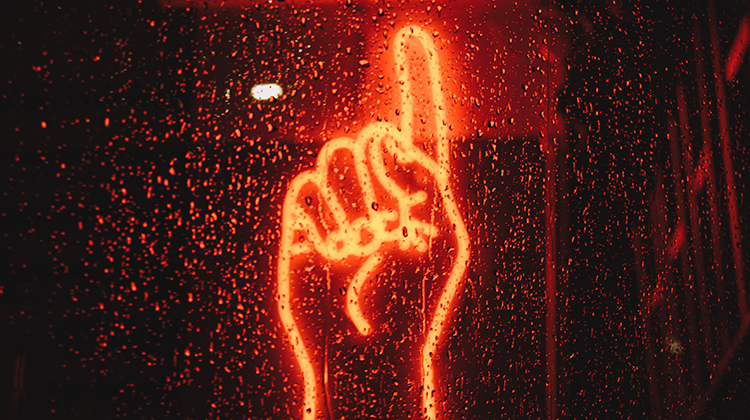Embrace every opportunity: what remote learning has taught us all

For the past few years, technology has been changing the way we teach and indeed, the way students learn. Yet, the transition to remote learning has been one of the most profound changes in education to date. In fact, if you’d told us in January this year that 2020 would be overrun by a global pandemic and that classrooms would be moved online, we’d probably have laughed and simply moved on with our day.
Yet, here we find ourselves, moving towards 2021, with months of remote learning under our belts.
For those who embrace change, it has been exciting and provided new opportunities. And, for those who don’t like change, they have had to roll with it anyway.
The constant change
Change has been the one constant during the pandemic. In every aspect of our lives, we’ve had to make changes. From trying to find new ways to work remotely to wearing masks while out and even as far as not hugging or touching our friends, everyone in the world has had to adapt.
The same goes for education, with almost every aspect having to be handled differently, whether it be engaging with students, providing feedback or setting work. But what opportunities has the pandemic presented for both educators and students, and how can these be leveraged when the return to face-to-face learning occurs?
Seeing the opportunities
Capturing the experience of students has been an important component of thinking about change. How can we utilise these learnings and embed them into education? Is there a future that allows for more variety to cater for different learning styles and needs among the student population?
The Learning from Remote Learning report conducted by VicSRC surveyed students about their remote learning experiences. In addition to the survey, a number of student consultations were undertaken with the aim of capturing the student voice.
Some primary students enjoyed remote learning, saying greater flexibility over their learning and being able to work at their own pace were some of the benefits. However, 76% cited a lack of interaction with their peers as one of the negatives. A lack of communication with teachers was also seen as a challenge with 49% of students wanting more engagement.
For secondary students, having greater control over their learning and being able to work independently as well as having more sleep and spending more time with family were positives. However, for those falling behind, the experience was markedly different.
Solving the challenges
Some of the challenges for students who didn’t enjoy the remote learning experience included a lack of interaction with their friends and peers, not enough time with their teachers and too much work. For many students, this resulted in feeling overwhelmed, isolated and disengaged. Additionally, access and equity were vital components in being able to transition successfully to remote learning.
What is clear is that while remote learning worked well for some students, for others it was a much more difficult transition.
While the pandemic presents very real challenges for educators and students alike, there is an opportunity to embrace change and integrate the learnings into a more inclusive and flexible system going forward.
Some of these opportunities are presented by the students themselves, with many who responded to the survey providing ideas for how things can be improved in a post-pandemic world.
One of the main opportunities includes giving students greater flexibility in their learning by pacing themselves on their own terms, and having more say about how and, more importantly, when they complete tasks. This gives them greater autonomy, empowering them in their education.
Another way they felt the education system could embrace change is by integrating online options with face-to-face learning. For some students, having all their resources and communications with teachers occurring within the same platform was helpful and allowed them to easily obtain feedback.
Students also felt that schools should offer a warmer and more comfortable environment with a greater emphasis on mental health and better school/life balance. The remote learning experience highlighted that for some students, the benefits of more breaks between classes and the opportunity to rest greatly assisted their ability to retain information. Also, shorter days and wellbeing periods could improve the mental health of young people, ensuring the school environment is less stressful.
The buzz word: pivot
If nothing else, the pandemic showed how quickly the education sector was able to pivot and embrace change to ensure that remote learning would be successful. It also showed that given the right tools and support, students could engage with education.
The situation continues to rapidly evolve before our eyes. Even as face-to-face learning resumes, there will still be outbreaks and schools will still be required to switch to online learning while sanitisation and contact tracing takes place. Importantly, we cannot change this situation. What we can change, however, is how we respond to it.
Now, schools must continue the pivot, seizing the opportunity to embrace some of the positives achieved through remote learning. In turn, students will be able to embrace the next transition, from remote to face-to-face learning in the near future.
Sue Karzis
Sue Karzis is the first female Chief Executive Officer of State Schools Relief, a Victorian based not for profit organisation that supports the needs of financially disadvantaged school students by providing them with new school uniforms, footwear and educational resources during times of vulnerability. Since her appointment, Sue has propelled the charity to record numbers of impact, assisting over 56,000 financially disadvantaged Victorian school children in 2018/19 alone with the number and value of items distributed exceeding 210,000 and $6.3M respectively.
Image by Ellie Burgin from pexels